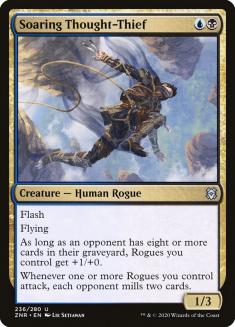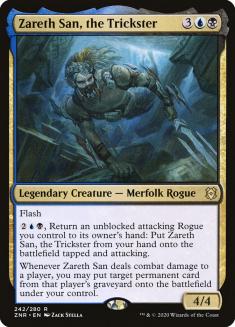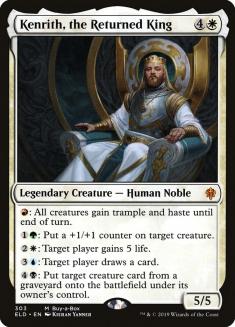Welcome to another edition of Fact or Fiction! Today, Ross Merriam, Ari Lax, and Paulo Vitor Damo da Rosa are here to give their takes on five statements about Zendikar Rising Standard. Don’t forget to vote for the winner at the end!
1. Banning Uro, Titan of Nature’s Wrath in Standard was a good decision.
Ross Merriam: Fact. Uro should’ve been banned months ago. And it’s embarrassing to have to ban Uro mere days after rotation. The card has been a clear problem for the entire summer, and while I was initially optimistic that losing Nissa, Who Shakes the World and Hydroid Krasis would make Simic decks more manageable, Lotus Cobra and Omnath, Locus of Creation ensured that wouldn’t be the case.
If you saw that Uro was a problem in the last format, and you knew the tools if was getting in Zendikar Rising, why would you have us slog through the mess that was Sultai, ruin the excitement of a new set with the prospect of a new bogeyman, and then disappoint people who ordered cards for that new bogeyman by banning it days later? This is on par with the Felidar Guardian debacle from a few years ago to me.
I mean, it’s better late than never, but at a certain point you should make an effort to stop wasting everyone else’s time and be punctual.
Ari Lax: Fact. There’s really no way you can argue Uro was OK. The never-dying, mana-generating, life-gaining, card-drawing, under-costed threat was too good. It’s too good in the exact same way in every format where Mox Sapphire isn’t legal. It’s like your deck has a commander, only the recasts actually cost less over time because drawing cards subsidizes the next cast. Somehow Cauldron Familiar got banned and it didn’t.
At least that’s over. I’ll miss winning with Uro plus discard spells, but the world is better off without it.
Paulo Vitor Damo da Rosa: Fact. I don’t think banning only Uro, Titan of Nature’s Wrath in Standard was a good decision, but I think Uro should have been banned in the previous B&R announcement, so it’s good that they’re at least rectifying that now. The card was just too oppressive to too many strategies, impossible to fight on any axis — you couldn’t discard it, counter it or remove it; you couldn’t race it or attack past it; you couldn’t even mill it! Now with Uro gone, there might be more aggressive decks that can flourish, as well as potential control decks (though the best control deck also got hit hard by the Uro ban).
2. Omnath, Locus of Creation should have been banned in Standard in yesterday’s B&R announcement.
Ross Merriam: Fact. With all the cards that have been banned in Standard over the last year, the vast majority have fallen into two categories. The first is low-risk mana generators like Fires of Invention and Wilderness Reclamation. Both provide a huge advantage once you untap with them, but importantly both also recouped the initial four-mana investment much of the time (Reclamation by untapping the lands used to cast it and Fires of Invention by letting you immediately cast a different four-mana spell for free). The combination of being low-risk and high-reward made them too powerful.
The second group is threats which fight effectively along all three axes of Magic: threats that are efficient on rate so they can dominate combat, that generate immediate card advantage so using removal on them isn’t appealing, and that gain life so you can stabilize when behind against aggressive decks with reach. Oko, Thief of Crowns and Uro are in that category, and now so is Omnath.
Banning a card so quickly into its life is a very bad look for Wizards of the Coast (WotC), especially on the heels of so many other bans, but last weekend’s slate of tournaments was absolutely miserable. Omnath was significantly more important to the successful decks than Uro, and watching how the card so quickly snowballed out of control was maddening. It felt like every other deck had to have a perfect draw while the Omnath deck also stumbled to have a chance.
We’ve seen this song and dance play out before. I’m not interested in seeing it again.
Ari Lax: Fact. Imagine if Uro drew a few less cards and died a bit more, but cost less and made more mana. Congrats, you made Omnath.
The only time drawing Omnath has been bad is when I have Omnath already, I don’t have things to do with Omanth mana, and my opponent is doing things that don’t care about Omnath gaining me 40 life. Usually this means they also have Omnath.
Please play Omnath so you will win with Omnath and then they can ban Omnath and I never have to talk about it again. Honestly, Omnath promotes miserable non-interactive games so much that banning it and leaving Uro legal may have made Zendikar Rising Standard more fun moving forward.
Paulo Vitor Damo da Rosa: Fact. I think this was basically 0% to happen, as they’ve shown strong precedent that they won’t ban cards from the new set, but Omnath is basically Uro number two. How do you fight it? You can’t reasonably race it, you can’t one-for-one it because it draws cards and often triggers landfall anyway, and you certainly can’t ignore it or you’ll lose the game on the spot — only countering it or discarding it remains.
I think part of the issue is that Omnath is just another one in a long list of very similar cards. Fires of Invention and Wilderness Reclamation were also four-mana permanents that doubled your mana and immediately paid for themselves, and they were both oppressive cards that ended up banned, so I wish they had just gotten that over with with Omnath.
3. Lotus Cobra should have been banned in Standard in yesterday’s B&R announcement.
Ross Merriam: Fiction. Lotus Cobra looks really impressive when you’re resolving Escape to the Wilds and Genesis Ultimatum, but without the powerful, resilient threats of Uro and Omnath to back it up, that kind of strategy is remarkably fragile. It’s perfectly fine to have decks that snowball every so often, as long as you have viable ways to disrupt them. This kind of pure ramp deck that Lotus Cobra would be in is in that category.
When you have a deck as powerful as Four-Color Ramp, all the cards support each other and they all shine. But the cards that are most difficult to interact with are the problem. Lotus Cobra is easy to interact with, yet can snowball out of control when left unchecked. So if Lotus Cobra is ramping into Uro and Omnath, cards that will outgrind decks that consistently kill it and outmatch decks that don’t kill it, you have a problem. Ramping into creatures that you can easily trade one-for-one with removal or expensive sorceries that are vulnerable to counterspells or are at risk of being uncastable if Cobra dies isn’t on the same level.
Ari Lax: Fiction, maybe? Lotus Cobra is really strong if unopposed and fueled. The real issue was how it directly bridged to Omnath or went off early with Uro. The things it goes off with early like Beanstalk Giant are worse at fueling continuing plays with it now that they aren’t cantrip flashback cost-reduced mythic rares, and if Omnath is banned the suite of things it directly ramps to is notably diminished. The next-best cards are probably Nissa of Shadowed Boughs, which has a largely unknown potential, and Winota, Joiner of Forces, which is its own problem.
That would leave Lotus Cobra as a fragile setup for big plays that doesn’t leave behind significant progress if it dies, and it does die spectacularly to easy inclusions like Spikefield Hazard and Stomp. If you want to use it as a fragile way to cast Turn 4 Garruk, unlike Omnath, I think this is worth a try and I’m willing to be wrong.
Paulo Vitor Damo da Rosa: Fiction. I think Lotus Cobra is a good card, but it’s one-dimensional — it’s a 2/1 creature that adds mana — and it’s easy to fight (you just kill it). It punishes you for drawing it late in the game, like all ramp cards should, so it carries a certain risk. The problem with Uro and Omnath are that they have all the good parts of Cobra without any of the bad parts (Uro is a ramp spell that you love to draw on Turn 8). I feel like, by itself, Cobra isn’t necessarily a problem. It’s actually an interesting card that forces decks to adapt to it but that offers counterplay.
4. With the banning of Uro, Titan of Nature’s Wrath, Dimir Rogues is now a Tier 1 deck in Zendikar Rising Standard.
Ross Merriam: Fiction. Stop trying to make Dimir Rogues happen. It’s not going to happen. The deck is underpowered, has a shaky manabase, and needs its key mill enablers to live in order to function properly. It can look good when it curves out or if Zareth San, the Trickster takes over, but those things don’t happen consistently enough for it to contend at the highest levels.
Obviously milling your opponent into their escape cards is a problem, but not one large enough to completely kill a strategy. Rogues’s issues are much deeper. Maybe if another good cheap Rogue or two is printed in the next set it has a chance, but I doubt that will happen.
Ari Lax: Fiction, but keep trying Rogues buddies. Rogues just isn’t fundamentally a Tier 1 structured archetype. It has to play junky synergy Rogues, it doesn’t have a clear runaway early-drop, it doesn’t have Rogues-specific or really any dominant payoff in the midrange, and its interaction is merely fine.
But it does have some approximations of those things. Heartless Act is a fine card, as are Drown in the Loch and whatever other two-mana counterspell you play. Agadeem’s Awakening is about as good as everyone expected it to be. Rankle, Master of Pranks is a mythic rare from Throne of Eldraine so it’s assured to be some level of stupid.
I think if we end up in a spot where the third toughness on Soaring Thought-Thief and Nighthawk Scavenger makes them amazing, like if Stomp is the most prevalent removal, or if being the smaller Mystical Dispute deck is good, Rogues will be good. It won’t be Tier 1 resilient to people deciding just to kill its one-for-one creature, but it will be somewhere in the mix just below that.
Paulo Vitor Damo da Rosa: Fiction. I think it depends on your definition of what “Tier 1” is (this has never been super-clear to me and I think each person uses it differently). Personally, the definition of “Tier 1” to me is, “If you play this deck in a tournament, you’re not handicapping yourself in any way due to your deck selection,” and to me decks in Tier 1 are all viable choices for someone whose sole goal is to win the tournament.
I think Dimir Rogues will be good, and I am honestly excited to try it out more after the Uro ban, but at this point I hesitate to call any deck without Omnath, Locus of Creation in it a Tier 1 deck. I think if you don’t play Omnath, you’re handicapping yourself, which automatically places it outside my Tier 1. This doesn’t mean the deck can’t win the tournament — it certainly can — it just means that someone who picks that deck is never going to be the favorite to start with and will have to overcome slightly worse odds.
If we allow for a wider range of Tier 1 decks, then I believe Dimir Rogues could be in there, but we’ve gotten to the point where I simply don’t think we should allow for this wider range in Tier 1. I do think the cards are all there for Dimir Rogues, though, and I expect it to be a viable deck. I would put it in the same tier as I put all the other good but non-Omnath decks, such as Mono-Green Aggro or Temur Adventures, since they’re viable decks that you can play and can win with (they’re certainly not memes) that are simply not as good as the best decks.
5. You’re excited to play Zendikar Rising Standard.
Ross Merriam: Fiction. Despite Uro being as powerful as it is, I enjoyed last summer’s post-ban Standard environment. At least Uro gives you time to set up a defense against it, and there were other good tools to play attrition games. Omnath can play attrition games but also demands an immediate answer as early as Turn 3. It snowballs so comically that I struggle to imagine how the card was tested in its current form and still allowed to see the light of day.
How are you supposed to play against such a deck? If you try to go under them, they gain a ton of life and throw out efficient blockers. If you stumble, draw too much removal, or draw too little removal, you lose. If your deck is interactive, you have to have the right interaction at the right time, and it’s tough to find a window to establish a clock that’s fast enough to kill them before they run you out of answers. There’s no weakness to exploit.
I have no desire to play Zendikar Rising Standard unless someone figures out a strategy that can compete with Omnath, and at this point I’d say trying to build such a deck is just tilting at windmills.
Ari Lax: Fiction. I’m just not, and I saved all the yelling for this one.
Core Set 2021 was a glimpse at a future of Standard that might be fair but appropriately exciting. The swath of bans after Wilderness Reclamation was a sign that we might be done with the slow chip away at a mountain of trash, only to find another layer underneath it. The lack of an Uro ban on the way out of last Standard was misguided, but I honestly expected it was due to a focus on Historic and would be quickly rectified.
But somehow we got to the Zendikar Rising release with Uro still legal and just dumped another bucket of mistakes on the pile. And even worse, Omnath is the same stupid mistake of “don’t print spells that refund their costs” that they made with Fires of Invention and Wilderness Reclamation and got all of R&D summoned to the CEO’s office twenty years ago when they made the card Time Spiral.
But there was still a chance to fix it, to realize that somewhere needed to be the end of the line with the same issues happening over and over again, to at least squelch out the most obvious issue immediately. This wasn’t it. This half-baked ban is just an indication we are back in the same path we were on a year ago when Field of the Dead lead to Oko, Thief of Crowns lead to Fires of Invention and Companions and Uro. Core Set 2021 feels like a fluke, something that forces us to say, “It was only seven of the last eight sets that got a card banned in Standard, not seven in a row.” If you read the banning discussions, it sure sounds to me like they believe this is all normal, or our fault for playing too much, and not their fault for breaking basic design rules we spent decades learning and trying to cover the mess up.
Anyways, I’m done with Standard. I’m literally disappearing into the woods where I’ll have minimal internet access next week. Maybe when I come back someone will decide to take appropriate action and fix it the right way. Or maybe the Grand Finals in two weeks will be a miserable disaster, and a single card will get banned, and you will have to keep playing Lucky Clover versus Embercleave versus some other egregious card for another month.
Or maybe Cedric and SCG will keep running wonderful events I feel morally and financially obligated to play in, and he will have to watch my rounds playing whatever card should have been banned and keep the other commentators from devolving into Tigtone / Waffle House-style arguments.
Paulo Vitor Damo da Rosa: Fact. I actually am excited to play Zendikar Rising Standard now because I like the play style on Rogues so much and I think there’s a chance it could be great. Last week, I knew there was no chance anything else was great — you were just forced to play Four-Color Ramp — and now at least there are a lot of different decks that you can try, which automatically makes the format more exciting. There’s a chance all those decks turn out bad and the format quickly goes back to where it was before the bans, but the glimmer of hope that other things are good will at least make the format a lot more exciting in the near future, even if it doesn’t pan out in the end (though it might and then that’ll be great).








